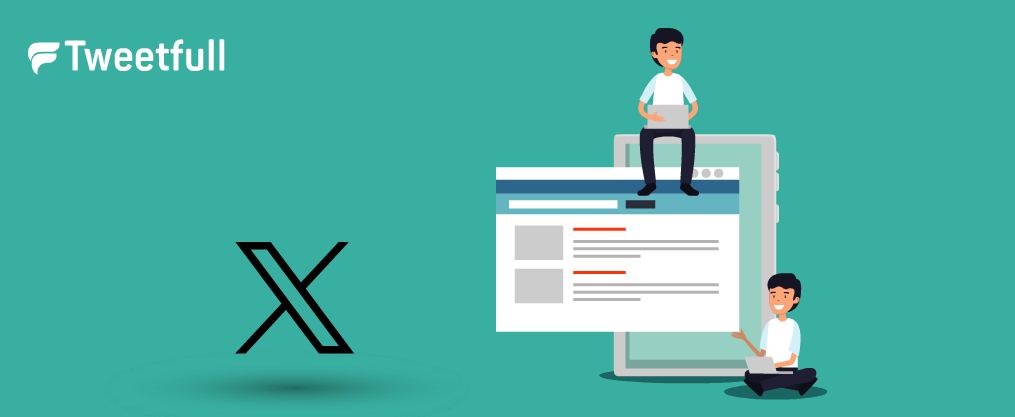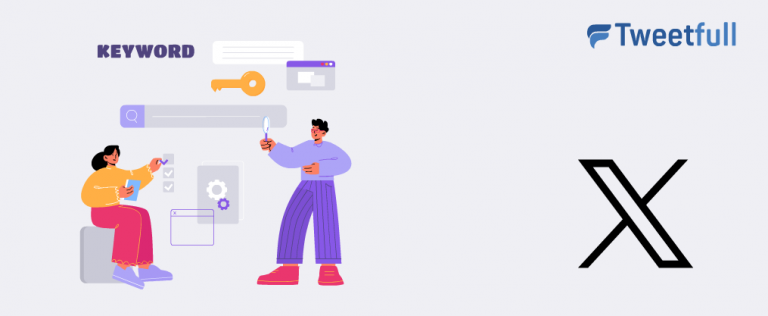A complete tutorial to setup and use Tweetdeck
Do you want to manage multiple Twitter accounts for free and efficiently? Are you looking for a way to handle your Twitter presence in a browser with live streaming and notifications? If so, TweetDeck is the perfect tool to explore. This powerful web app allows users to organize content and monitor multiple timelines on a single screen, making it easier to manage tweets, direct messages, and account activities all in real time.
TweetDeck is designed to help users track Twitter lists, searches, hashtags, and much more, all from one customizable dashboard. Whether you are a creator, entrepreneur, or social media manager, TweetDeck can streamline your Twitter management while saving valuable time.
What is TweetDeck?
TweetDeck is a specialized, powerful app that provides Twitter users with a free, comprehensive way to manage multiple Twitter accounts simultaneously. Originally, TweetDeck supported other social networks such as Facebook, LinkedIn, and FourSquare. However, after Twitter acquired TweetDeck, the app was integrated exclusively into Twitter’s ecosystem, and support for other platforms was removed.
Since April 2016, TweetDeck has been available only as a web app, as the mobile and desktop versions were discontinued. To ensure access to all features, security updates, and maintain compatibility with Twitter, it is important to always use the latest version of TweetDeck.
While this change disappointed many users who relied on the desktop app, the focus shifted to making TweetDeck’s Twitter integration as powerful and seamless as possible.
This real-time tool is now the go-to solution for users who want to manage multiple timelines, post tweets, send direct messages, schedule tweets, and engage with their audience effectively, all without the risk of violating Twitter’s rules.
TweetDeck’s User Interface
The TweetDeck interface is centered around a series of customizable columns that can be tailored to fit your Twitter management needs. These columns can display your Twitter timeline, mentions, direct messages, Twitter lists, trending topics, search results, favorites, hashtags, or tweets from specific users. You can hover over the column header to reveal options for rearranging or managing columns. If you no longer need a column, you can easily delete it to keep your dashboard organized.
One of the standout features of TweetDeck is its ability to organize content on a single screen, allowing users to monitor multiple timelines simultaneously. The app also uses Twitter’s default URL shortening, meaning any link you add to a tweet uses just 23 characters of the 280-character limit.
Users can filter columns to include or exclude tweets containing specific words or tweets from particular usernames. This makes it easier to track conversations and engage with the right people.
From the dashboard, you can manage multiple Twitter accounts, post tweets immediately, or schedule tweets to be sent at a later time. TweetDeck also supports two-step verification for added account security and includes a confirmation step before sending or scheduling tweets to prevent accidental posts.
Within the interface, below each tweet, you will find options to like, retweet, or reply. Clicking the three dots icon next to the favorite icon opens a menu with additional options such as embedding the tweet, copying its link, sending it via direct message or email, and managing lists by adding or removing people. You can also mute, block, or report accounts directly from this menu.
When composing tweets, you can attach up to four images or videos and schedule them to be posted even if you are not logged in at that time, maximizing your content reach.
Getting Started with TweetDeck
To begin using TweetDeck, visit tweetdeck.twitter.com and log in with your Twitter username and password. You can also sign in with your account to access TweetDeck securely. Once signed in, you will land on the TweetDeck dashboard, which is divided into four default sections:
- Home: Displays your normal Twitter timeline with tweets from accounts you follow.
- Notifications: Shows actions taken by people following or engaging with you.
- Messages: Contains all your direct messages; double-click any message to open and reply.
- Trending: Lists the trending topics in your region.
This layout provides a comprehensive overview of your Twitter activity, all accessible from one page.
Add and Manage Multiple Twitter Accounts
One of TweetDeck’s most powerful features is the ability to manage multiple Twitter accounts from a single interface. This is especially useful for social media managers and businesses handling several profiles.
To add an account:
- Click on the Accounts icon on the left side panel — it’s the fourth icon from the bottom.
- In the pop-up column, select Link another account you own.
- Review the confirmation message and click Continue. You may need to confirm the account linking process to complete the setup. This informs you that the main account you are logged into will have permission to take actions on behalf of the linked accounts.
- Enter the username and password for the other Twitter account and click Authorize.
You can repeat this process to add multiple accounts. When composing a tweet, you can choose which account to post from by selecting the appropriate profile icon.
To remove an account from TweetDeck, go to the Accounts section, select the account you wish to remove, and follow the prompts. Note that accounts signed in via your main Twitter login cannot be removed from TweetDeck. If you want to unfollow accounts instead, see this step-by-step guide.
TweetDeck (now X Pro) also offers advanced features for pro users, such as managing multiple accounts and scheduling posts.
How to Add a New Column on TweetDeck
The default four columns on your dashboard can be customized to suit your preferences by adding new columns. To add a column:
- Click the + icon on the left side panel.
- A pop-up window will display various column options to choose from, including:
- User: Displays tweets from any specific user you manage.
- List: Shows tweets from a Twitter list you have created.
- Collection: Lets you create a curated list of tweets to share with followers.
- Likes: Displays all tweets you have favorited.
- Messages (all accounts): Shows direct messages across all linked accounts.
- Mentions: Displays tweets mentioning your account’s username.
- Followers: Lists your Twitter followers in real time.
- Scheduled: Shows tweets you have scheduled; these disappear once posted.
- Activity: Displays recent activities related to your account.
Adding and customizing these columns allows you to monitor multiple timelines and engage with your audience more effectively.
Schedule Tweets Using TweetDeck
Scheduling tweets is simple with TweetDeck. To schedule a tweet:
- Click the blue and white feather icon on the left panel to open the compose tweet column on the right side.
- If managing multiple accounts, select the profile icon of the account you want to post from.
- Compose your tweet, keeping within the 280-character limit.
- To add media, click Add Images or Videos, select the file from your device, and click Open.
- Instead of clicking Tweet to send immediately, click Schedule Tweet to choose a future date and time to send your tweet.
You can also send direct messages by selecting the Direct Message option and entering the Twitter username(s) of the recipient(s). This feature supports sending messages to multiple users simultaneously.
How to Add a Search Column for Tweets on TweetDeck
To monitor specific topics or conversations, you can add a search column:
- Click the magnifying glass icon below the feather icon on the left panel.
- Type your search query, which can include hashtags, keywords, or Twitter handles (x username).
- The search results will appear as a new column to the right of your existing columns.
You can refine your search using the settings icon at the top-right of the search column. Filtering options include:
- Tweet Content: Filter by included or excluded words, date range, and whether to include retweets.
- Location: Choose tweets from specific regions, cities, or countries.
- Tweet Authors: Specify usernames who wrote or were mentioned in the tweets.
- Engagement: Set minimum likes, retweets, or replies.
- Preferences: Enable sound, desktop notifications, and adjust media preview size.
These filters help you track relevant content and engage with the right audience efficiently.
Sending and Receiving Direct Messages in TweetDeck
Managing your Twitter conversations is seamless with TweetDeck’s Direct Messages feature, which lets you monitor multiple timelines and engage with your communities in real time—all from a single screen. Whether you’re handling multiple accounts or just want to keep your private conversations organized, TweetDeck’s web app makes it easy to access, send, and manage direct messages efficiently.
1. Accessing Direct Messages:To get started, look for the Messages column on the left side of your TweetDeck page. If the column isn’t already visible, simply click the plus (+) icon on the left side menu to add it. This column will display all your direct messages across your connected accounts, allowing you to view and respond to conversations without switching between profiles.
2. Sending Direct Messages:To send a new direct message, click the New Message button at the top of the Messages column. Start typing the recipient’s Twitter username in the “To” field—TweetDeck will suggest matching usernames as you type. Select the correct user, compose your message (up to 280 characters), and click Send. You can also attach images or videos to your message, making your communication more engaging.
3. Receiving and Replying to Direct Messages:Incoming direct messages appear instantly in the Messages column, so you never miss an important conversation. To reply, click on the message thread to open it, type your response in the compose box at the bottom, and click Reply. This threaded view helps you follow conversations easily, even when managing multiple accounts.
4. Managing and Searching Direct Messages:TweetDeck organizes your direct messages in a threaded format, making it simple to track ongoing conversations. If you need to find a specific message, use the search bar at the top of the TweetDeck page—just enter a keyword or username to quickly locate the content you need. This feature is especially helpful when you’re engaging with large communities or handling customer support.
5. Security and Privacy:When managing direct messages—especially across multiple accounts—security is key. Always use strong passwords for your Twitter accounts and consider enabling two-step verification to reduce the risk of unauthorized access. This is particularly important for businesses or organizations using TweetDeck to manage sensitive communications.
6. Scheduling Direct Messages:While TweetDeck allows you to schedule tweets, scheduling direct messages is not a built-in feature. However, you can explore third-party apps that integrate with TweetDeck to schedule DMs, helping you plan your outreach and engagement more effectively.
7. Customizing Your Direct Message Experience:To prioritize your conversations, you can customize your TweetDeck layout by moving the Messages column to a prominent position or adding multiple message columns for different accounts. Use the settings icon at the top-right of the Messages column to filter messages or change display options, ensuring you stay organized and responsive.
By mastering the Direct Messages feature in TweetDeck, you can engage with your audience, manage multiple timelines, and build stronger relationships—all in real time. Whether you’re supporting customers, networking with peers, or growing your online communities, TweetDeck’s direct messaging tools help you stay connected and in control.
TweetDeck Alternatives
While TweetDeck is a powerful and free tool for managing multiple Twitter accounts, other apps offer additional features that might suit your needs:
- TweetFull: Automates liking, retweeting, and following to boost engagement with your target audience.
- Tweepi: Offers advanced account management features.
- Tweeten: Similar to TweetDeck, allows management of multiple accounts with a customizable interface.
- Tweetbot: A premium Twitter management tool available for Mac, iPhone, and iPad users.
Each of these tools has its own unique strengths, so consider trying them alongside TweetDeck to find the best fit for your social media strategy.
With this complete guide, you now have all the information needed to start using TweetDeck effectively. Whether you want to manage multiple accounts, schedule tweets, monitor trending topics, or engage with your followers in real time, TweetDeck offers a robust and user-friendly platform to grow your Twitter presence seamlessly. Start exploring TweetDeck today and take your Twitter management to the next level!







